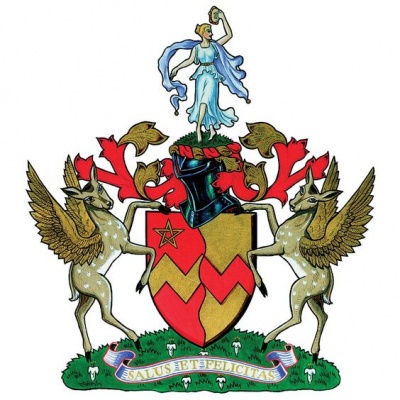Royal Academy of Dance: Difference between revisions
Jump to navigation
Jump to search
Knorrepoes (talk | contribs) No edit summary |
Knorrepoes (talk | contribs) No edit summary |
||
| Line 8: | Line 8: | ||
===Origin/meaning=== | ===Origin/meaning=== | ||
The arms were officially granted in 1937. | |||
The fess dancetty is an obvious canting element. | |||
The crest at the top of the coat of arms is a figure of Terpsichore, one of the Muses from Greek mythology, representing dance. The supporter at either side of the shield is a winged doe, symbolising lightness and grace of movement. The Escutcheon shows a pentagram symbolising health, with a wavy and zigzag line conveying the movement of dancing. The motto 'Salus et Felicitas' translates to mean health and happiness. | |||
{{media}} | {{media}} | ||
| Line 15: | Line 22: | ||
[[Category:Institutional heraldry of the United Kingdom]] | [[Category:Institutional heraldry of the United Kingdom]] | ||
[[Category:granted 1937]] | |||
Revision as of 07:26, 6 June 2021
| Heraldry of the World |
| British heraldry portal Civic heraldry of the United Kingdom |
|
ROYAL ACADEMY OF DANCE
Official blazon
Origin/meaning
The arms were officially granted in 1937.
The fess dancetty is an obvious canting element.
The crest at the top of the coat of arms is a figure of Terpsichore, one of the Muses from Greek mythology, representing dance. The supporter at either side of the shield is a winged doe, symbolising lightness and grace of movement. The Escutcheon shows a pentagram symbolising health, with a wavy and zigzag line conveying the movement of dancing. The motto 'Salus et Felicitas' translates to mean health and happiness.
Contact and Support
Partners:
Your logo here ?
Contact us
© since 1995, Heraldry of the World, Ralf Hartemink 
Index of the site












